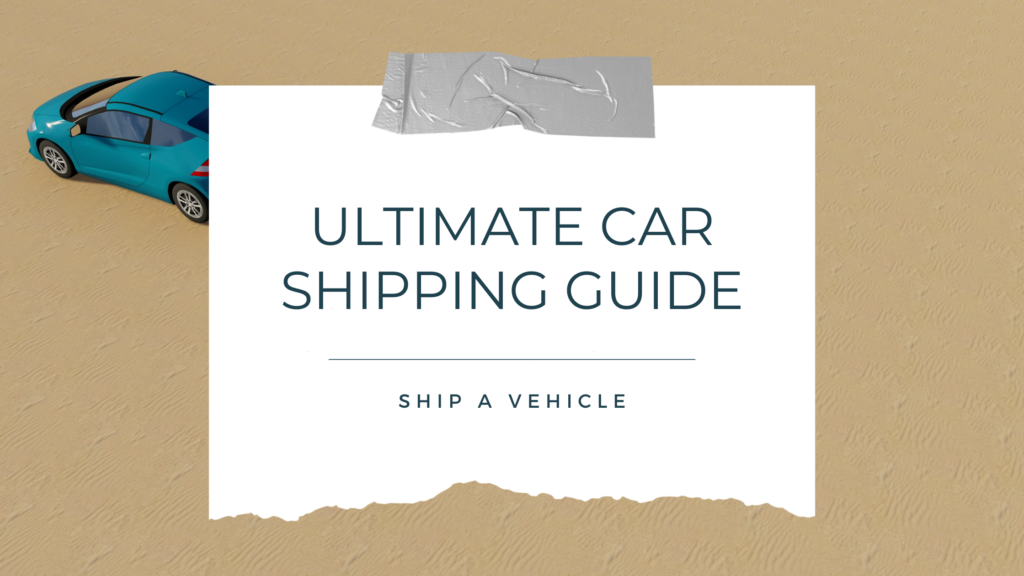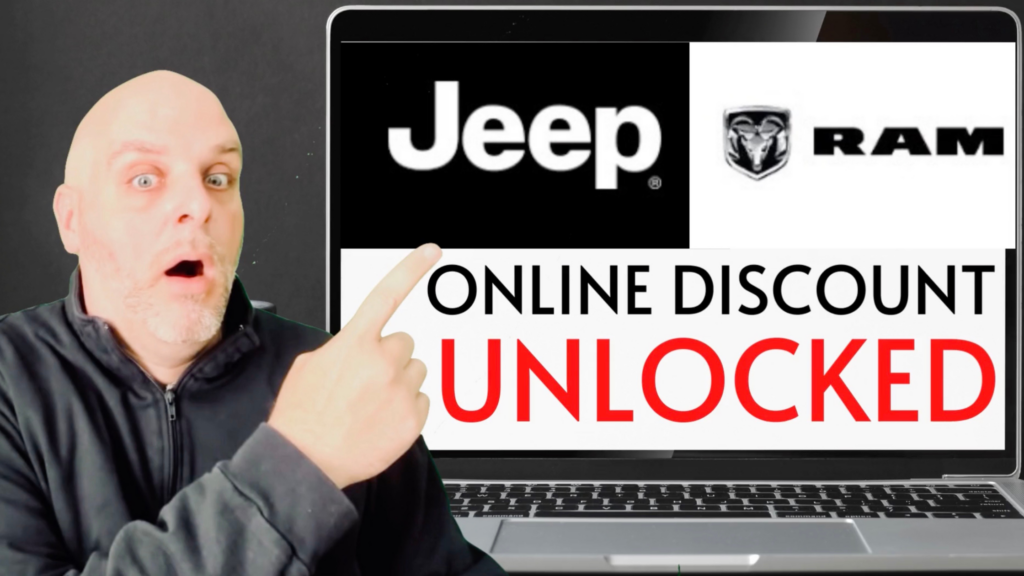
Car Price – Let’s talk about the vehicle sale price
How to know if it’s a good car price. Vehicle sale price isn’t the only factor in a car deal. You’ve got to have knowledge of the whole deal.
Purchasing a used car can be a smart financial move, but it requires careful planning and attention to detail. A thorough used car checklist will help ensure that the vehicle you select meets your needs and is in good condition.

Start by establishing your budget and researching various models to understand the market value and identify suitable options.
When you’ve pinpointed a few potential vehicles, conduct a comprehensive inspection. Pay attention to both the exterior and interior condition, and don’t forget to check under the hood. It’s also crucial to test drive the car to assess how it handles and listen for any unusual noises that could indicate underlying problems.
Don’t skip the paperwork. Verify the vehicle’s history report to ensure it hasn’t been in major accidents or had title issues. Negotiating a good deal is essential, and understanding the car’s value and history can give you leverage. By following a detailed checklist, you can buy with confidence and avoid costly surprises.
When purchasing a used car, it’s crucial to weigh the benefits and understand the different types available. This knowledge can you make the right decision for your family suiting your specific needs and budget.
One of the primary advantages of purchasing a used car is cost savings. Used cars generally have a lower price tag compared to new ones, which can reduce monthly payments and overall loan amounts. Buyers also avoid the steep depreciation that new cars face, typically losing up to 20% of their value in the first year alone.
Additionally, insurance premiums for used cars are often lower. This is because the replacement cost for an older car is less than that of a new vehicle. Choosing a Certified Pre-Owned (CPO) vehicles can offer peace of mind. These cars have typically undergone rigorous inspections and come with extended warranties.
Lower purchase price Reduced depreciation Lower insurance costs CPO vehicles with warranties
There are several categories of used cars that buyers can consider. The most common include traditional used cars sold by private sellers or dealerships and Certified Pre-Owned (CPO) vehicles. CPO cars are usually more expensive but come with the benefit of manufacturer warranties and often pass strict inspections.
Another category is “as-is” vehicles, which are sold without any warranty and typically reflect lower prices. While these can be a budget-friendly option, the buyer assumes all repair risks.
Traditional Used Cars:
Certified Pre-Owned (CPO):
Setting a clear budget is important before buying a preowned car. Look at calculating your total available funds, available financing options, and factoring in insurance costs.
To start, calculate how much you can afford to spend on a car. Consider your monthly expenses and income.
List out all your monthly obligations such as rent/mortgage, utilities, food, and entertainment. Subtract these from your net income to find out how much you can allocate to a car payment.
Don’t forget to include unexpected expenses like repairs or maintenance. It’s recommended to only spend 10-15% of your net monthly income on car-related costs, including insurance and maintenance.
When your budget is tight, financing can help. There are various financing alternatives available such as traditional bank loans, credit unions, and dealership financing.
Compare interest rates and terms from different lenders to ensure you get the best deal. Check your credit score before applying, as a higher score typically results in lower interest rates.
Avoid loans that extend beyond five years to prevent paying too much in interest. Remember, the goal is to find a plan that fits your budget without compromising your financial stability.
Insurance is a significant part of your budget when buying a used car. Rates vary based on factors such as the car’s make, model, age, and your personal driving record. Most people tend to find out how much a vehicle insurance cost after already purchasing a vehicle leaving them surprised when rates are much higher than they had thought.
That’s why it’s wise to find out the cost of a particular vehicle’s insurance before purchasing. And also shopping around.
Contact multiple insurance companies for quotes. Ask about any discounts for which you might be eligible, like safe driver or multi-car discounts.
Include insurance costs in your budget to avoid that unpleasant surprise. And choose a plan that offers sufficient coverage without exceeding your budget limits.
Ensure the car you’re interested in doesn’t have unusually high insurance rates by considering its safety features and reliability ratings.
Accurate budgeting and planning can make the car buying process smoother and less stressful.
Finding the right used car involves choosing the brand and model, understanding its market value, and browsing available inventories. Each step is crucial to ensure you get a vehicle that meets your needs and budget. One of the best places to find a used vehicle is on Facebook Marketplace.
Selecting the right brand and model is the foundation of your car search. Consider your needs and preferences. For example, Toyota and Honda are known for reliability, while brands like BMW and Audi offer premium features.
Assess your requirements. If you need a family car, models like the Honda CR-V or Toyota Highlander may be suitable. For commuting, compact cars like the Toyota Corolla or Honda Civic are practical choices.
Make a list of features you desire, such as fuel efficiency, safety ratings, and cargo space. Reading reviews and owner testimonials can provide insights into long-term satisfaction and common issues with specific models.
Understanding the market value of your chosen car model ensures you pay a fair price. Tools like Edmunds’ Used Car Values allow you to enter specific details about the car and get an estimated market price range.
Compare prices from various platforms, including dealership websites, franchise lots, and private sellers. This helps you gauge whether a deal is reasonable or overpriced.
Be mindful of the car’s condition, mileage, and any additional features. Cars with lower mileage or extra features might command a higher price. Ensure you factor these into your price evaluation to avoid surprises.
Browsing inventory is the final step. Start with reputable dealerships and franchises that provide certified pre-owned vehicles. These cars often come with warranties and have undergone detailed inspections.
Online platforms like eBay Motors can also be useful. Filter your searches by location, price range, and specific model criteria to find the best options available.
Don’t go visiting multiple dealerships or you’ll end up making an impulsive decision. Your best bet is to use the car research site like cars.com and Facebook marketplace to find vehicles listed by owner.
Also, be aware that dealerships list vehicles on Facebook Marketplace too, so you need to be aware of who you are talking to.
If it’s a private owner, as to test drive the car. Don’t hesitate to ask for maintenance records and vehicle history reports to ensure you’re making an informed decision.
Evaluating the condition of a used car is crucial to ensure you make a smart purchase. This process involves a thorough visual inspection and a detailed mechanical evaluation to uncover any potential issues.
Begin by examining the exterior of the vehicle. Look for any signs of rust, dents, or scratches on the body panels. Pay attention to the gaps between panels—uneven spacing can indicate previous bodywork or accidents. Examine the windshield and other glass for any chips or cracks.
Check the tires for tread depth and wear patterns. Uneven wear can be a sign of alignment issues or suspension problems. The lights and other electrics should be tested to confirm they are functioning correctly.
Inspect the trunk and hood for signs of damage or corrosion. Additionally, look at the interior, including the seats, for any tears, stains, or unusual odors. These can be indicators of past issues or poor maintenance.
The mechanical aspects of the car need to be inspected thoroughly. Start by checking the engine oil and other fluids. Discolored fluids can signal underlying problems. Engine, suspension, and alignment should be assessed by a qualified mechanic if possible.
Pay attention to the overall condition by listening for unusual noises during a test drive. Investigate any ripples or inconsistencies in the bodywork under good lighting, as they may indicate previous damage. Open and close the doors, hood, and trunk to ensure they operate smoothly.
Verify the car’s maintenance records and obtain a Vehicle History Report to check for past accidents, mileage accuracy, and any previous ownership issues. This report can also reveal whether the car has undergone regular maintenance, offering insight into the vehicle’s reliability.
Use these guidelines to ensure that you cover all critical aspects while assessing the condition of a used car before making your purchase.
Additionally, be realistic. If there’s one thing we preach at YCBA, it’s transparency. If you’re buying a used vehicle with 70-100,000 miles on it, then expect to see some dings and dents and a not-so-perfect body. Afterall, someone or multiple persons drove this vehicle before you.
If you can’t be realistic about the visual inspection, then you sure can be realistic about a fair price and value for the used car. Keeps things things in consideration when trying to by a used car private party.
A test drive is crucial when buying a used car. Focus on assessing the vehicle’s overall performance and checking essential functions to ensure it meets your needs.
During the test drive, evaluate the engine and suspension by driving on various road conditions, including highways and city streets. Check for smooth acceleration without any knocks or hesitations. Pay attention to the alignment by seeing if the car drifts to one side.
Test the car’s handling by driving over speed bumps. This helps to assess the suspension and listen for any unusual noises. Evaluate the brakes by performing both regular and hard stops to ensure they are responsive and effective.
Make sure to keep the stereo off and the windows up when listening for any mechanical noises. Smooth performance from the engine at idle and during acceleration indicates good condition.
Before driving, inspect the transmission fluid, steering fluid, and brake fluid levels. Low levels might indicate leaks or other issues. Check the dashboard electronics, making sure all warning lights are functional and there are no persistent warning signals.
Test the HVAC system by running both the air conditioner and heater. Ensure they respond quickly and work efficiently. Evaluate the ergonomics and comfort of the seats and controls to see if they suit your needs.
Lastly, confirm the presence of important accessories such as a spare key, especially since modern keys and fobs can be expensive to replace. Check the vehicle’s owner’s manual for any specific instructions or common issues to be aware of for that particular model.
When buying a used car, it’s essential to consider the ongoing costs that come with ownership. These include insurance expenses, maintenance requirements, and fuel efficiency.
Insurance costs can vary significantly based on the make and model of the vehicle. Newer cars or high-performance models generally have higher premiums.
Factors such as the car’s age, safety features, and even the location of the owner play a crucial role.
Comparing quotes from different insurers and considering factors like liability, comprehensive, and collision coverage can help get an accurate estimate of these expenses.
Maintenance and repairs can add up quickly, especially for older cars.
It’s essential to evaluate the car’s service history and the availability of parts. Vehicles with a record of consistent maintenance are generally more reliable.
The costs can vary based on the make and model; luxury vehicles often have higher repair costs. Creating a budget for regular check-ups and potential repairs can prevent unexpected expenses.
Fuel efficiency is a crucial factor that affects long-term ownership costs.
Understanding the car’s mileage per gallon (MPG) can provide an insight into its fuel consumption. Cars with higher MPG ratings are generally more cost-effective to run.
It’s also important to consider emissions, as vehicles with lower emissions may qualify for tax breaks or other incentives. Electric cars or hybrids are typically more fuel-efficient and environmentally friendly.
When buying a used car, verifying documentation is crucial to ensure you are making a sound purchase. Key aspects include checking the ownership history and service records.
Checking the ownership history of the vehicle provides insight into how the car was used and maintained. Start by requesting the Vehicle Identification Number (VIN) and running a report through platforms like Carfax or AutoCheck.
These reports can reveal the number of previous owners, usage type (e.g., personal, fleet, rental), and any reported accidents. Look for inconsistencies in mileage readings which might indicate odometer tampering. Pay attention to any instances of the car being sold multiple times within a short period, which could be a red flag for underlying issues.
Ensure the seller has a clear title with no liens, meaning no outstanding loans or claims against the vehicle. You can verify this by cross-referencing the title details with the information provided in the VIN report.
Service records detail the maintenance history of the vehicle, which is essential in assessing its condition. These records can typically be obtained from the seller or through AutoCheck and similar services.
A comprehensive service history shows regular maintenance such as oil changes, brake inspections, and other routine services. These records can highlight any major repairs or recurring issues, providing a clearer picture of the car’s reliability.
Review dates and mileage on service records to ensure consistency. For example, significant gaps between services or abrupt changes in recorded mileage might indicate neglect or mileage fraud. It’s also advisable to check if any recalls were addressed, ensuring the car meets safety standards.
Service records are vital for gauging the longevity and ongoing maintenance needs of your prospective vehicle.
To successfully buy a used car, it’s crucial to master negotiation strategies and ensure a safe closing process. Knowing how to navigate both steps can help in securing the best price and mitigating risks.
A successful negotiation starts with thorough preparation. Before entering the dealership, research the market value of the car using tools like Edmunds’ Used Car Values. Knowing the car’s actual cash value gives a strong starting point for negotiations.
You’ll hear a lot of people say to make the initial offer lower than your maximum budget to allow room for counteroffers. For example, if a car is listed for $15,000 and your budget is $14,000, an initial offer of $13,000 is sensible.
Knowing the invoice price can also provide leverage. The invoice price is what the dealer paid for the car, and this can help in understanding how low they might go. Build rapport with the dealer and stay firm on your price. If necessary, be willing to walk away.
Discuss any additional costs upfront, like warranties or fees, to avoid surprises later. Focus on the total deal, not just the monthly payments, to ensure the best overall price.
Once the price is agreed upon, carefully review the sales contract. Ensure all agreed terms are documented, including the final price, any warranties, and conditions of sale. Clarify any charges that seem unclear or unnecessary.
Never sign a contract under pressure. Take the contract home if needed to review it thoroughly. Make sure Certified Pre-Owned (CPO) vehicles include the certification and inspection details.
Before making a deposit, confirm it’s refundable if the deal doesn’t go through. It’s also wise to insist on a comprehensive pre-purchase inspection by an independent mechanic to uncover any potential issues.
Secure a duplicate of all signed documents for your records. This includes the contract, warranty papers, and any correspondence related to the purchase. Keeping these documents organized ensures you have proof of the deal and the agreed terms, safeguarding against future disputes.
After buying a used car, certain steps are crucial to ensure everything is in order. These steps include handling vehicle registration and taxes, as well as obtaining proper insurance.
Once the used car purchase is complete, the vehicle must be registered with the local Department of Motor Vehicles (DMV). The new owner should gather all necessary documents, including the signed title, bill of sale, and proof of insurance.
When registering, the DMV will collect various fees, including registration fees and, in some cases, sales tax. It’s important to know the exact amount to avoid any surprises. In some states, inspections may be required before registration. Details about required documents can often be found on state DMV websites. To make the process smoother, it’s beneficial to complete all forms beforehand and ensure all checks are made payable to the correct entity. Keeping a checklist can help track each required document.
Before driving the car off the lot, obtaining auto insurance is essential. Auto insurance not only protects the driver in case of an accident but is also a legal requirement in most states. Researching various insurance providers and comparing rates can help find the best deal that suits individual needs.
Factors influencing insurance rates include the car’s make, model, age, and the driver’s history. Coverage options vary, so deciding whether to opt for liability, collision, or comprehensive insurance is key. Liability insurance covers damages to others, whereas collision and comprehensive cover the vehicle itself. It’s also helpful to look for policies offering roadside assistance and rental car coverage. Contacting an insurance agent can provide personalized advice tailored to the specific vehicle and driving habits. Keeping the insurance card in the car ensures it’s always on hand if needed.
This section addresses common queries that arise when purchasing a used car, covering important aspects such as inspection procedures, evaluating maintenance history, and determining fair market value.
During a test drive, assess the car’s steering, brakes, and acceleration. Listen for unusual noises from the engine and exhaust system. Verify that the air conditioning, heating, and other electronic systems work properly. It’s also beneficial to test the car on various road conditions to get a true feel of its performance.
Check the service records for regular oil changes, tire rotations, and scheduled maintenance. Look for records of any significant repairs or replacements like timing belts or transmission overhauls. Verify if the car has been in any serious accidents or had major mechanical issues. A thorough maintenance history indicates how well the car has been cared for.
When purchasing from a private seller, review the title to ensure it’s clear of liens. Examine the bill of sale for accuracy in details such as sale price and vehicle identification number (VIN). Verify the vehicle’s registration status and ensure the seller provides a valid smog certificate if required by your state.
Use online tools like Kelley Blue Book or Edmunds to compare prices of similar cars based on make, model, year, mileage, and condition. Consider the car’s location as prices may vary regionally. Examine recent sales data of comparable vehicles and consider having a professional appraisal for a precise valuation.
Inspect the exterior for damage such as dents, rust, or mismatched paint. Check the condition of the tires and look for even tread wear. Inside the car, verify that the seats, upholstery, and carpets are in good condition. Test all interior features like lights, gauges, and infotainment systems to ensure functionality.
Inquire about the specifics of the certification process and what criteria the car had to meet. Ask for details on the warranty coverage including length and what it encompasses. Additionally, request a detailed vehicle history report and check if any services or repairs were performed as part of the certification. For more information you can visit 25 Questions to Ask When Buying a Used Car.
By understanding and asking these critical questions, buyers can make an informed decision and ensure they are getting a reliable vehicle that suits their needs.


How to know if it’s a good car price. Vehicle sale price isn’t the only factor in a car deal. You’ve got to have knowledge of the whole deal.

Worried about shipping your car? This comprehensive guide covers the ten most asked car shipping questions including where to get a shipping quote, choosing the best carrier, to when to arrange for shipping.

Mike walks you through the ways to get a discount on Chrysler, Jeep, Dodge, Ram supplier price for Employee, Friends and Family or using the Tread Lightly membership.

Before you buy a car there is plenty you should do. Take your time, as this is one of the most expensive purchases you can make. There is no sense in rushing into a car purchase. These are the essential steps in preparing to buy a car.

There’s a myth out there that buying a car at the end of the year is the best time to buy. I’ve also heard buying at the end of the month or quarter is best. But, I just don’t buy into that notion. I know from experience, the only way to ensure you are getting a good deal is by making dealerships compete.

You want the right SUV when you’re taking a road trip. Whether it is a cross-country trip to a weekend get away or sports tournament for your kids, the right SUV makes a difference in your travels.

Choosing the perfect commuter car can transform the daily grind of navigating city traffic into a more pleasant experience.
When stuck in stop-and-go traffic, you want a vehicle that’s not only fuel-efficient but also comfortable and packed with modern features.
Get car buying resources & secrets from Mike, former car salesman and join our growing community. Opt out any time, we never spam.

Want our help to save time and sanity while doing the car buying thing? Schedule a free strategy call.